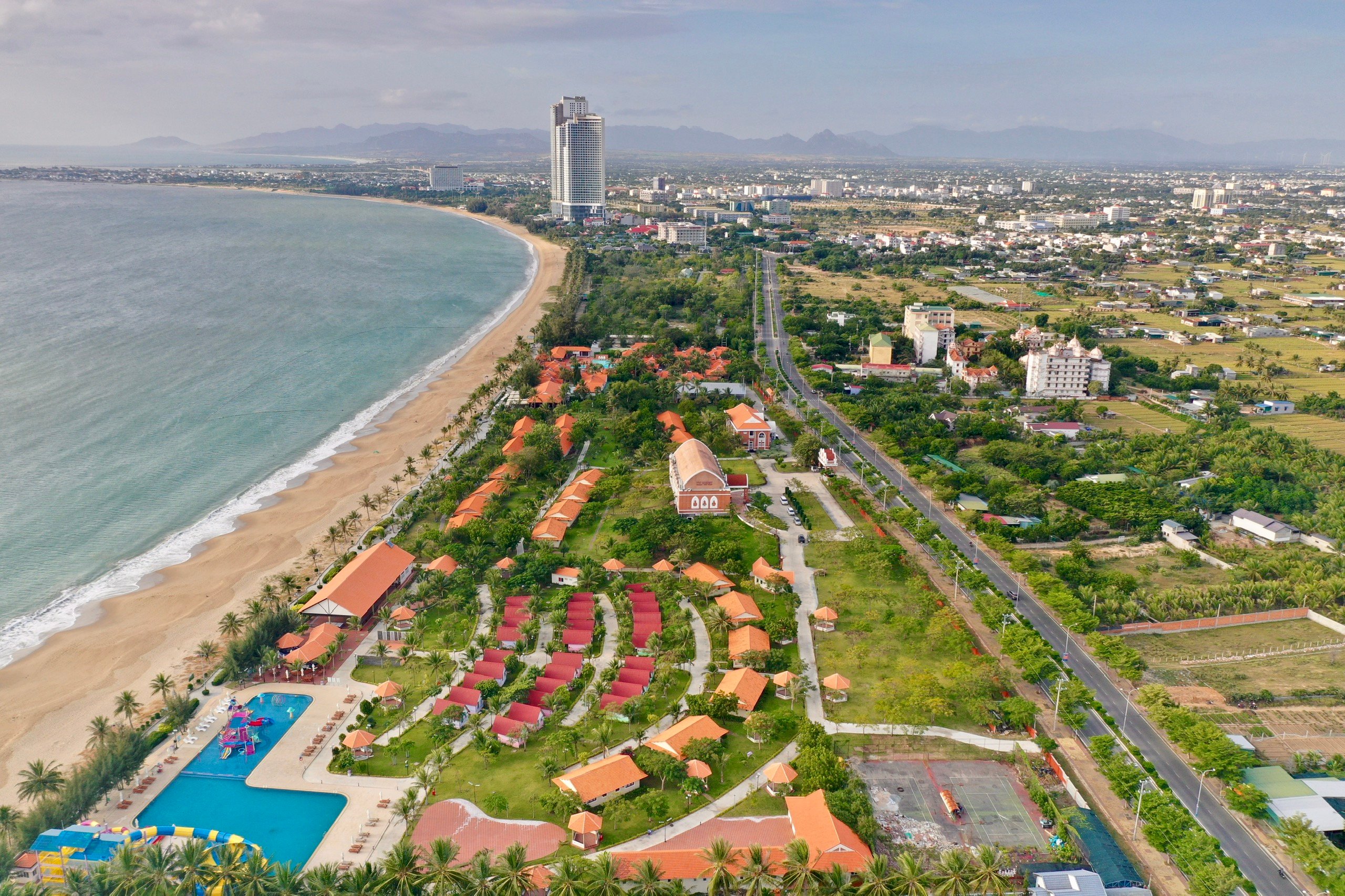The Politburo 's decision to study the merger of provinces is very appropriate and timely, addressing the root cause of fragmented development, scattered investment, and inefficient resource allocation in recent years.

Ninh Thuan is one of the 10 provinces with the smallest population in Vietnam (according to data as of mid-2024). In the photo: Phan Rang - Thap Cham city, Ninh Thuan province - Photo: QUANG DINH
This policy reflects groundbreaking thinking and has profound implications for economic , cultural, and social development; economic, infrastructure, social, and environmental development policies will be easier to implement synchronously and achieve greater effectiveness on a large scale.
From an administrative perspective, merging smaller provinces into larger units could lead to a more profound streamlining of the state apparatus compared to current practices, while further reducing administrative costs and improving operational efficiency.
Development policies will also be restructured in a coordinated manner, avoiding the dispersion of resources, duplication, and overlapping in management.
Furthermore, this merger also helps save a lot of budget, freeing up more resources to invest in economic development, infrastructure, and social welfare.
Economically, provincial mergers can create larger economic zones, increase competitiveness, attract investment, and maximize development potential.
Some smaller, less developed provinces can benefit from support from stronger provinces, enjoying modern infrastructure and abundant investment capital.
Provinces with larger land areas and denser populations will become important economic centers, helping to attract domestic and foreign investors due to their larger markets and more abundant human resources.
Policies for transportation, urban development, and industrial zones will also be implemented on a large scale, avoiding fragmentation and piecemeal approaches.
The merger also brought about positive changes in the social sphere, helping to reduce the significant disparities between provinces in terms of living standards, income, and development opportunities.
When localities are merged, the quality of public services such as healthcare, education, and transportation will be improved thanks to more concentrated budgets and resources instead of the scattered and dispersed resources as before.
Simultaneously, when provinces are merged, cultural, economic, and social interaction will become stronger, contributing to the comprehensive development of people's lives.
While the merger of provinces offers many potential benefits, it also presents numerous difficulties and challenges that need careful consideration.
First of all, in terms of administration and state management, the merger process requires changes to the administrative organizational system, from the provincial level down to the district and commune levels.
This leads to disruptions in personnel, workplaces, and organizational structure, potentially causing many officials and civil servants to lose their positions or be transferred, creating a sense of instability.
Unifying these policies is a major challenge, requiring careful adjustments to avoid overlaps or conflicts of interest.
Economically, the disparity in development levels between the merged provinces could create an imbalance in resources.
Businesses and investors from more developed provinces may be concerned about having to share investment incentives with less developed provinces, creating a sense of apprehension. Furthermore, provincial mergers also present socio-cultural challenges.
Each locality has its own cultural identity and customs, which can lead to difficulties in integration and create a sense of disagreement, even over seemingly simple matters like changing administrative place names.
In addition, geographical and infrastructure challenges also need to be assessed. An unsynchronized transportation system could cause people to spend more time traveling to new government offices.
At the same time, public services such as healthcare, education, and social welfare may be disrupted during the transition period, especially in areas far from the new administrative center…
In general, merging provinces brings about many potential benefits in terms of administration, economy, and socio-culture, rather than simply meeting three mechanical criteria: population size, area, and number of district-level administrative units.
To ensure a smooth merger, thorough preparation, a reasonable roadmap, and coordinated solutions are needed to minimize potential negative impacts.
It is crucial to ensure consensus from the people and businesses, avoiding instability during the transition, thereby maximizing the benefits of restructuring the local administrative system.
Source: https://tuoitre.vn/sap-nhap-tinh-dot-pha-va-thach-thuc-20250222091004027.htm










































































































Comment (0)